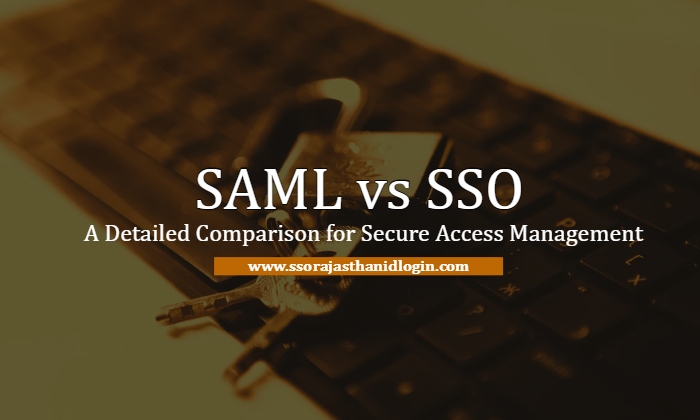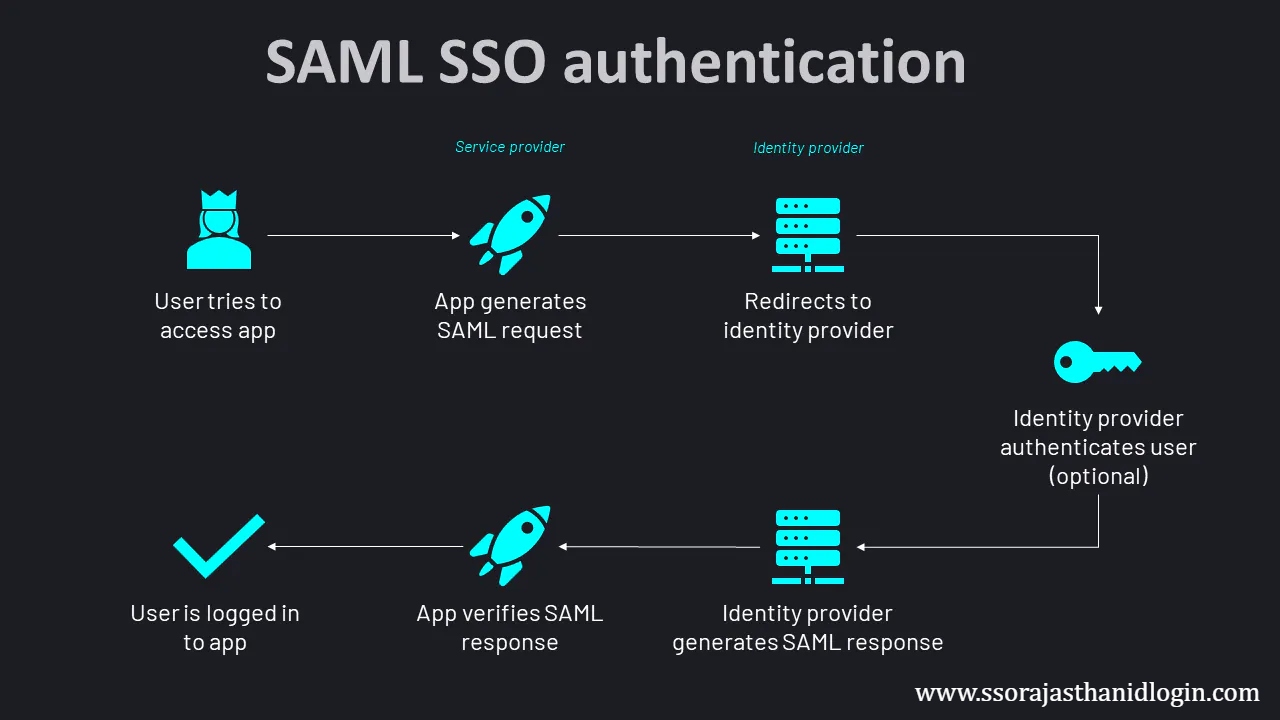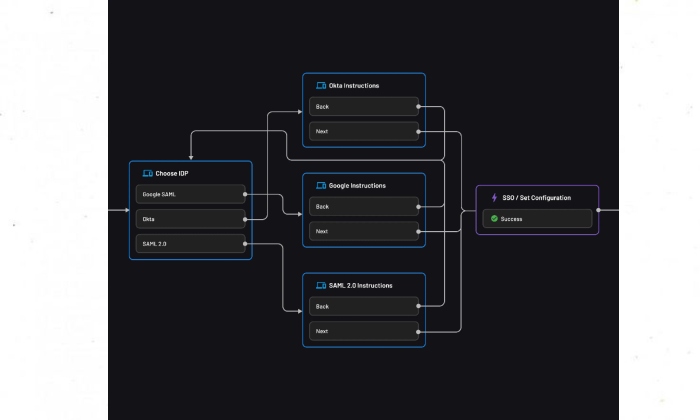SAML vs SSO: A Detailed Comparison for Secure Access Management

Table of Content
SAML vs SSO: A Comprehensive Guide to Secure Login Solutions
Learn The Main Differences Between Saml Vs Sso In Our Detailed Guide. Find Out Which Authentication Method Best Suits Your Security Needs.
SAML vs SSO: A Detailed Comparison for Secure Access Management
SAML vs SSO In the event that you work with cloud-based services or web applications, you have probably encountered the terms SSO and SAML. Although they manage the procedure differently, both systems are crucial for handling access control and user authentication.
Because SAML and SSO are closely related, comparing them can be confusing. When combined, they provide a safe way for users to use one set of login credentials for several different apps. By doing this, you may improve security, make authentication easier, and lessen the chance of account takeover. To assist you grasp the distinctions and similarities between SAML and SSO, we'll examine them in more detail in this post.
What is SSO?
Digital service providers (SP) often offer multiple related applications in their suites. For instance, they may have separate platforms for:
- Maps
- Conferencing
- Cloud storage
- Video sharing
- Web browsing
- Calendar services
Using a single set of credentials (such as a username and password) to log in to all of these connected services is known as single sign-on, or SSO, authentication. If you've used your single Google account to access Maps, Gmail, and Drive, you've already benefited from SSO.
All associated applications validate a user's identity when they check in through an SSO entry point. As a result, users can access different services without having to input their credentials again. Employees may move across an organization's digital platforms with ease, and users can switch between apps with ease.
SSO lessens the possibility of account takeover in order to achieve this. Fewer credentials also mean fewer passwords for criminals to steal, so that's not its only advantage. This ultimately results in a user authentication method that is more secure.
 SAML vs SSO Details
SAML vs SSO DetailsWhat is SAML?
- Security Assertion Markup Language is referred to as SAML. It's an XML (Extensible Markup Language) standard that makes safe authorisation data transmission and authentication possible. XML standards dictate how things should be understood, just like rules do in any other language. Here, data packages are interpreted by SAML.
- Similar to a secret code, SAML enables SSO to function. Online services can check users' credentials by communicating with identity providers (IdP) with its assistance.
- In essence, the majority of applications give a third-party IDP access to authenticate users. However, SAML offers the specifications needed for the application's login interface to communicate with the IdP securely and comprehensibly. This implies that it is possible to swiftly and safely confirm the user's identity.
- To put it another way, SAML assists in proving your identity and granting you access to websites and apps that have been approved when you log in to an SSO system.
 SAML Details
SAML DetailsThe difference between SAML vs SSO
It's simple to mix up SAML vs SSO because they're both parts of the same authentication procedure. Despite their relationship, they are not the same.
| SAML | SSO | |
| Purpose | SAML is the standard through which SPs and IdPs communicate with each other to verify credentials. | SSO is an authentication procedure designed to make it easier to use a single set of credentials to access several apps. |
| Features | SAML improves security by unburdening SPs from having to store login credentials. Instead, it places the responsibility on IDPS which specializes in such services. | By offering a single access point for the various services and platforms users often visit, SSO streamlines the user experience (UX). |
| Use cases | SAML simplifies and controls authentication-related tasks. It controls authentication rights on several platforms and enforces safe login procedures. | SSO, whose main purpose is to enable seamless logins across an organization's many services, is made easier by SAML. |
How SAML and SSO are related
Among the numerous common protocols that provide SSO authentication is SAML. SAML is one of the rulebooks that mediates how to authenticate such login requests, whereas SSO allows users to log in to numerous accounts with a single set of credentials.
Businesses, organisations, and developers looking to improve user experience (UX) across their digital services can achieve this by implementing SSO, which makes user logins straightforward.
Implement SAML sans struggle with Descope
Scanning through the SAML protocol's nuances can be difficult and time-consuming. Give users a single authentication solution across all of your platforms using Descope's SAML-based SSO to streamline logins and save time for your developers.
 SAML vs SSO Update
SAML vs SSO UpdateSAML-based SSO authentication implementation is simple thanks to Descope's visual workflow designer. You can provide users with a comprehensive login process that includes secure SAML connectivity, a reliable IdP, and customisable UI options with only a few lines of code.
Benefits of SAML
- Cross-Domain Authentication: Enables safe authentication between several domains with the use of cross-domain authentication.
- Increased Security: Lowers the possibility of password theft and phishing.
- Simplified User Experience: Makes managing user access easier.
Benefits of SSO
- Enhanced User Experience: Users log in once and gain access to all connected systems.
- Reduced Password Fatigue: Fewer passwords to remember and manage.
- Centralized Management: Easier to manage and secure user credentials.
Use Cases for SAML
- Enterprise Single Sign-On: Frequently used in sizable companies with several apps.
- Educational establishments: Applied to provide federated access to scholarly materials.
- Government Organisations: Enables safe entry to public services.
Use Cases for SSO
- Corporate environments: Provide easy access for staff members to corporate tools and apps.
- Consumer Applications: Online services employ consumer applications to expedite user login.
- Cloud services: Makes accessing different cloud-based platforms easier.
Conclusion
SAML vs SSO are integral components of modern authentication systems. While SAML is a specific protocol used to implement SSO, both play crucial roles in enhancing security and improving user experiences. By understanding their differences, benefits, and use cases, you can make informed decisions about which solutions best meet your organization’s needs.
FAQ (Frequently Asked Questions)
The protocol used to carry out SSO is called SAML. SSO is a more general idea that enables users to utilise a single set of credentials to access several applications.
Indeed, SSO is not limited to SAML it may be implemented using a variety of technologies and protocols.
By minimising the frequency of user logins, SAML enhances security by mitigating the likelihood of password theft and phishing assaults.
Governmental organisations, educational institutions, and enterprise single sign-on are among the common use cases for SAML.
Users gain from SSO by having a streamlined login process and fewer passwords to remember.
For SSO implementation, OAuth, OpenID Connect, Kerberos, and LDAP are alternatives to SAML. Every one of these has advantages and applications of its own.
If a company needs strong security features, needs cross-domain single sign-on, or is integrating with systems that support SAML explicitly, it may decide to use SAML.